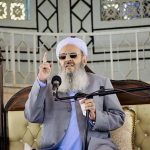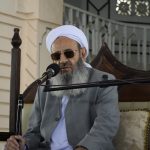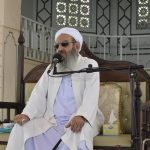 There has been considerable discussion about the new expansion of the corridor between Mount Safā and Mount Marwah where sa`y is performed.
There has been considerable discussion about the new expansion of the corridor between Mount Safā and Mount Marwah where sa`y is performed.
In truth, The Prophet’s Companions disagreed about something more fundamental: the rite of sa’y itself. They disagreed whether it was a pillar of Hajj, or a lesser obligation, or merely a Sunnah act, depending on their understanding of where the Qur’an says: “…there is no blame upon him for walking between them.” [Sūrah al-Baqarah: 158]
Each of the Companions defended his or her personal opinion on this matter without being harsh and without disparaging or dismissing each other’s views. They respected one another and upheld the ties of brotherhood.
We will discuss the question of the expanded corridor between Mount Safā and Mount Marwah as a matter wherein there is flexibility.
1. Allah says: “Indeed, as-Safa and al-Marwah are among the symbols of Allah . So whoever makes Hajj to the House or performs `umrah – there is no blame upon him for walking between them.” [Sūrah al-Baqarah: 158] This is proof that the width of the area for performing sa`y is the what is between Mount Safā and Mount Marwah. In other words, the area is as wide as the same two mountains are wide, stretching east and west. Several eyewitnesses – supported by written attestations to their character – have confirmed that Mount Safā is as wide at its base as its present elevation. This extends to over 20 meters to the East of the location of the presently identifiable mountain. The same goes for Mount Marwah. Both are as wide at the base as they are high in elevation. It has been established that the current expansion of the corridor that was undertaken by King Abdullah does not exceed the breadth of the two mountains form east to west.
People continue to ascend to the top of Mount Safā` while still in the mosque proper as they near the corridor. This is proof that the current corridor still does not include the entire width of the mountain base even now. From the West, the pilgrims start ascending as they approach Mount Safā.
2. The jurists of the past did not define the bredth of the corridor. We find in the Shāfi`ī legal work Nihāyah al-Muhtāj, that Jamal al-Dīn al-Ramlī discusses the matter, saying: “I do not find anythingin the (jurists) pronouncements to delimit the breadth of the corridor. Their silence on this matter is due to the fact that defining the breadth is unnecessary, since what is required is simply to cover the area between the Safā and Marwah each time. Swerving a little bit from the path of the sa`y does no harm, as stated by al-Shāfi`ī.” Scholars of the past spoke about the matter in approximate terms, never given specific limits.
3. Before the latest expansion, the corridor was not perfectly straight. It was curved and tending in one direction. This s can be seen in all blueprints and drawings of the corridor from before the expansion. One of these is the map made by the Egyptian Survey Authority in 1948, which clearly shows how the corridor tended in one direction. The corridor in even earlier times had been straight, which shows that some areas had been included or excluded in the corridor during this earlier construction period.
4. When the Prophet (peace be upon him) performed Hajj, he was accompanied by more than 100 thousand people. there can be no doubt that this number would have had to spread out through the valley in an area larger than the present corridor. The Prophet (peace be upon him) did not prohibit them from going beyond a certain distance to the east or west. At that time, there was no building or structure to demarcate the limits or keep them within certain bounds.
5. The current corridor is not as wide as the area between Mount Safā and Mount Marwah during the era of the Prophet nor during the era of his Companions. In those days, the path went through the Sacred Mosque in a place called al-Haswah to the east of the Well of Zamzam. In much later times, in 164 AH, the Abbasid caliph al-Mahdī moved its path a bit to the east, as stated in al-Azraqī’s History of Mecca. The caliph’s decision to do so was not met with any objection from the scholars. No disagreement has been recorded about the matter whatsoever. This shows that the breadth of the corridor is wide.
6. There is no text in the Qur’ān or Sunnah that indicates in any way that the present expansion of the corridor is unlawful. The expansion does not extend beyond the breadth of the two mountains, and Allah says: Indeed, as-Safa and al-Marwah are among the symbols of Allah . So whoever makes Hajj to the House or performs `umrah – there is no blame upon him for walking between them.” [Sūrah al-Baqarah: 158]
7. It is an obvious fact that a mountain’s base is wider than its summit. Mountains have a roughly conical or pyramid shape. Therefore the base of each of the mountains is certainly wider than the area of the summits that we see.
8. The expansion of the corridor was undertaken out of necessity. We do not have to wait for a human tragedy to occur within the corridor, like what happened in the Mu`aysim Tunnel, before taking appropriate measures.
9. This is a question wherein there is scholarly disagreement. Some of those who say it is permissible to expand the width of the corridor are from Mecca and know it well, like Sheikh `Abd al-Wahhāb Abū Sulaymān and Sheikh `Uwayd al-Mutarrafī. The people of Mecca are best acquainted with its mountains. Likewise is the case of those who saw the situation of Mount Safā and Mounth Marwah before the expansions with their own eyes and bore witness to what they saw, like Sheikh Abdullah b. Jibrīn.
10. The head of state adopted one of the various opinions that the scholars of Islam arrived at through their juristic discretion in consideration of the pilgrims’ general welfare. The opinion adopted does not contradict with the Qur’an and Sunnah in any way. Therefore, the people are entitled to adopt that opinion. It is not appropriate for anyone to cause the people to doubt the validity of their Hajj and `umrah when the matter is one of juristic discretion, or tell them they should not perform the Hajj. Casting doubt on the expanded corridor for the sa`y will cause people a lot of harm.
Source: IslamToday









Comments